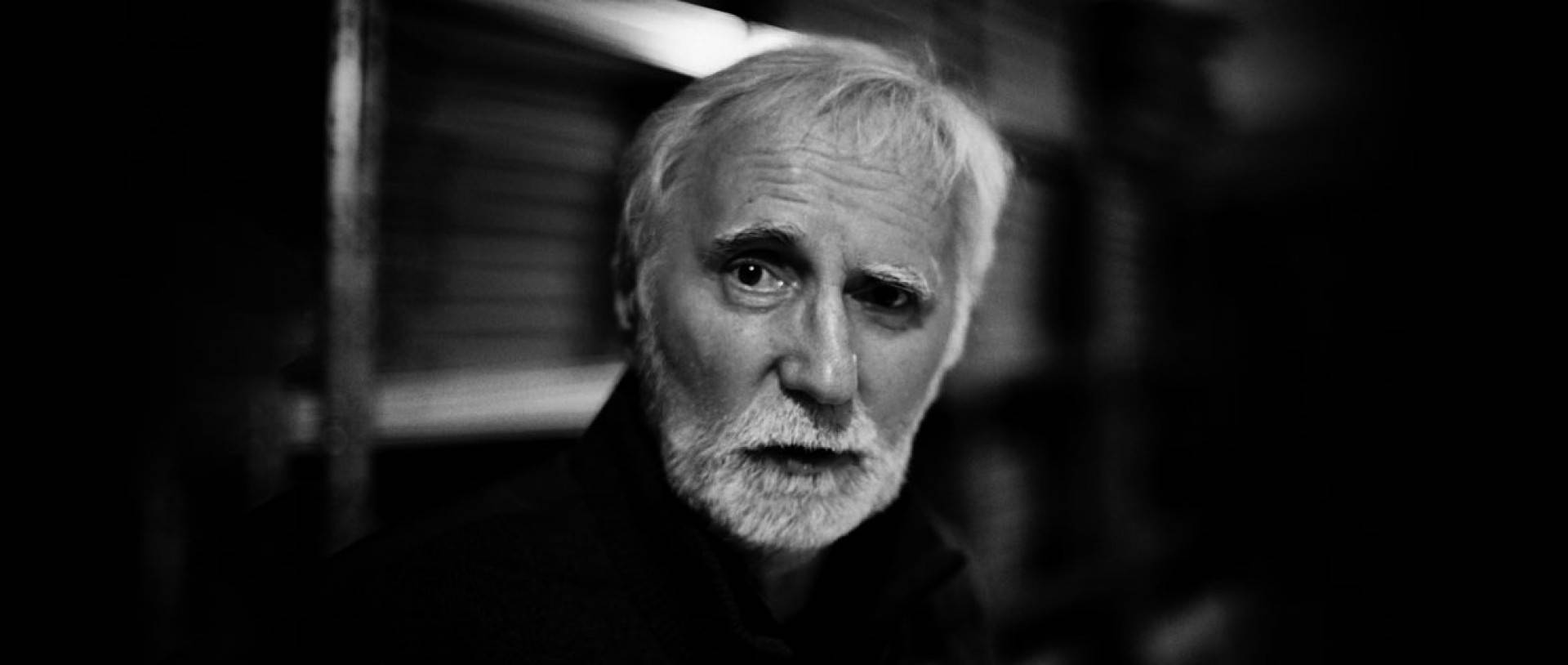

THE VISION OF VLADIMÍR ŽIDLICKÝ
Vladimír Židlický has long been drawn to expressiveness. In spite of establishing his preference for the medium of photography early on, he did not turn his back on his experience of painting from the 1960s and 1970s and the associated gestural entries into the scenery of the paintings. He did not shy away from significantly — and at the time boldly — tampering with negatives, even positives. One can therefore speak of a pictorial effect, albeit in a somewhat different sense compared to the historical era of the classics, of noteworthy names like Alfred Stieglitz, Edward Steichen, Josef Sudek, or František Drtikol... In contrast to them, Vladimír Židlický has embarked on the enlargement of dimensions going beyond the tradition of collectors viewing sheets of graphic and photographic records passing through their hands... In his own words, he characterizes his journey as: “My approach was extreme in the seventies. I’ve never been a typical photographer, so I still cling to what is called the subjectively animalistic seal. The faces, if not removed entirely, scratched out, or blurred, would result in possible personification; this did not suit me at the time, being a phenomenon leading the viewer’s communication with the work astray. I am, however, often not as rigorous in my new endeavours. I overlay negatives, paint onto them with a brush, leave engraved traces, turn them into inversions, use repeated exposures and any other, often rather extreme procedures.
I go through the trash bins in at the recycling centre and look for things that reflect the structures of the sixties. I profess the power an object being marked by an accumulation of time; I then scan these things... In addition, it is quite easy to further intervene in the digital image at any stage and thus extend the mystery of creation practically to infinity.”
Regardless of Vladimír Židlický having devoted his entire productive years to creating exhibits in the true sense of the word, refined at by toning at the very least, though frequently resulting the absolutely unique, even on a global scale, the key to a deeper interpretation of his work like holds something else. Of course, Židlický continues to strive for an exceptional figurative composition and for the inimitable quality of his creations, marked by author’s touches as continuous features of communication... Nevertheless, existential reflection should be considered the artist’s main motivation.
After all, what remains of art if it is exclusively sequestered to the aesthetic level? And not only by way of dictionary definitions, but above all, by the all-too-widespread practice! — I am afraid that a mere gaze upon of the so-called self-evident is not sufficiently satisfactory...
It goes without saying that Židlický’s large-format canvases are also impressive in their monumentality. They can visually dominate a considerable space. Yet their bewitching sophistication is not an effect for its own sake; it is the bearer of the expression of awareness of the threats of existence in the contemporary world. Židlický contemplates civilizational threats in a truly global context. The concurrence of numbers of circumstances influenced the transformation of his themes: namely, for instance, the coronavirus pandemic, but also the effects of continuous warfare, as a result of politics fueling conflicts, whether international or within a given society. Incentive for the sequence of Prohibitions of Expression, and responses to the problematic effects of consumerist tendencies, including negative environmental influences, are also clear. Bosch’s figures of the A Mystical Reunion after Five Centuries invoke the supports of the age-old spirituality of the human race.
The collective title of the publication of works from 2018 to 2021 That’s how I see it… signals the will to publish personal attitudes. Yet for the creator, it is not simply a matter of reassuring oneself of one’s own position up against external threats, but rather a fundamental existential message as such.
It can hardly be anything other than cautionary and polemical should we not be receiving a strong progressive perspective as a guarantee of a positive future. At the same time however, Židlický’s philosophy of relations between societies on a wider scale and individuals does not lack the recurring symbolism of circular séances, indicating the essential need for communal connection. The offer of promising prospects thus remains open.
Josef Moucha, theorist of photography, photographer
VLADIMÍR ŽIDLICKÝ, a native of Hodonín (1945), a graduate of the department of art photography at FAMU (1971—1975) as well as a teacher of many years, has exhibited at prestigious galleries and museums in Europe, Asia, and the United States of America since 1980 — both independently and in consciously developed exhibitions together with individuals of world renown. He is represented in many notable public and private collections, for example: Center national d’art et de culture Georges-Pompidou; Bibliothèque nationale de France; Maison européenne de la photographie, Paris; Museum of Modern Art, New York; Museum of Fine Arts, Houston; Museum of Modern Art, San Francisco; Art Institute, Chicago; Museum Ludwig, Cologne; Museum voor Fotografie, Antwerpen; Le musée Nicéphore Niépce, Chalon-sur-Saône; Musée de la Photographie, Charleroi; Museet for Fotokunst, Odense; Moravian Gallery in Brno; Gallery of the Capital City of Prague; Sztuki Museum in Łódź; Collection Barends & Pijnappel (Galerie Baudelaire), Antwerp; La collection Madeleine Millot-Durrenberger, Strasbourg…

















































